KUANTAN: Continue Funding NCO Programme. Chief of Defence Forces General Zulkifeli Mohd Zin yesterday urged the government to continue funding the Armed Forces Network Centric Operations (NCO) project though the cost might be high.
He said the failure to fund the next phase of the NCO project – Phase 1B – would render the efforts and sacrifices in developing the first phase – Phase 1A – worthless. Phase 1A is the proof of concept stage while Phase 1B from 2017 to 2023 is the implementation part of the project.
Among others under Phase 1B will be the introduction of tactical data link to the RMAF’s F/A-18D Hornet fleet and later the Su-30MKM.
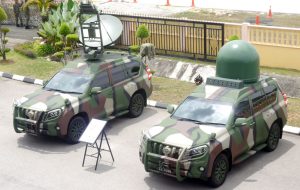
Zulkifeli said this in his speech during a demonstration of the NCO capability together with the X-Band Satellite communication system at the Kuantan air base here. Phase 1A of the NCO – developed by the Armed Forces with Sapura Secured Technologies as the lead vendor – cost some RM2 billion.
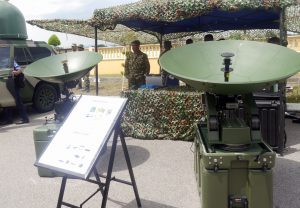
Zulkifeli did not mentioned the cost of the Phase 1B but it is expected to cost as much as Phase 1A. Later, Defence Minister Datuk Seri Hishammuddin Hussein told the media that despite the current economic conditions, the ministry will ensure that the next phase of the NCO will be funded.
“NCO is a phased project, planned in line with the 10th Malaysia Plan (10MP) to the 14MP (2011-2035), and includes Phase 1A, Phase 1B, Phase 2, Phase 3 and Phase 4.
“We’ve gone through Phase 1A, and it was handed over to the MAF on Dec 12, 2015, and today, a demonstration was carried out to show the ability of NCO’s Phase 1A operation.
“The ministry will ensure that all plans for subsequent phases are implemented accordingly,” he added
NCO Phase 1A became operational in Dec 2015 with the implementation of the X-Band satellite communication link. Under the NCO, using the X-band satellite link, the Armed Forces now have shared situational awareness and common operating picture. It was hoped under the NCO, the three services will achieve self-synchronisation in operations.
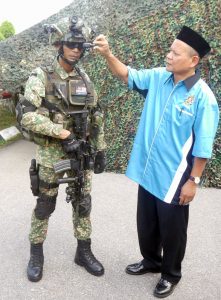
At the moment, most of the NCO capability are mostly with the RMAF and RMN although some of the Army’s legacy system have also been integrated with the same system.
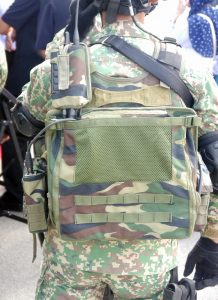
Among the legacy systems which had been NCO-enabled are the Army’s Grup Pertahanan Artileri Udara TRML-3D radar, Battery Control Post, Igla Vehicle Mounted Manpads, the Future Soldier System experimental platoon and ACV 300 command and control vehicle and the Land Rover Fixed for Radio.
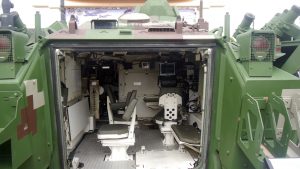
Bahagian Staf Perisikan Pertahanan (the Armed Forces military intelligence) which operates a Schiebel Campcopter S-100 UAV system (2 air vehicles, one ground station and a radar system) will also transmit live video feed of the system using the NCO system in
operations.
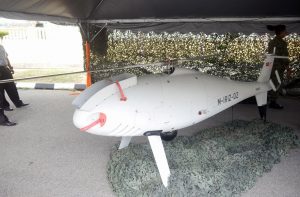
The UAV system was purchased in March, 2015 but the contract was only announced at the function yesterday. Although the UAV is civil registered its operations completely under BSPP under the Company Owned, Military Operated concept.
At LIMA 2015, the Armed Forces signed an MOU for the procurement of the UAV with Petronas under a PFI scheme.
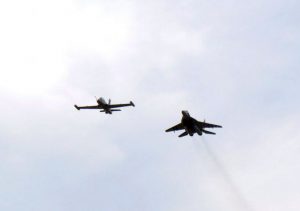
Apart from fixed NCO sites, the Armed Forces also operate a number of mobile and man-packable X-band satellite terminals so NCO-enabled systems could be linked in the field. These vehicles and deployable satellite terminals systems are integrated by Siecom System Sdn Bhd.
The main node of the Armed Forces satellite communication is based at the Paya Jaras Camp in Sg Buloh, Selangor. The X-band satellite capability is leased from Measat.
— Malaysian Defence
If you like this post, buy me an espresso. Paypal Payment

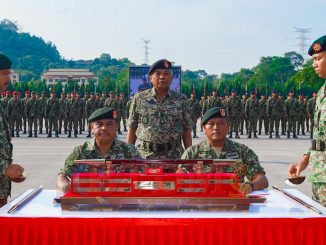
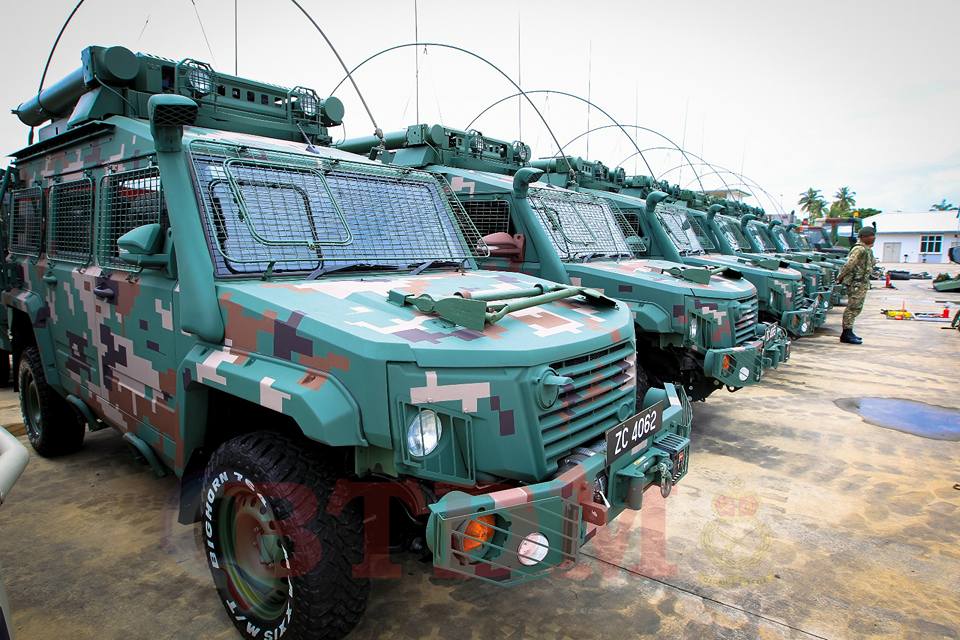

That Future Soldier System, was that Sapura’s sample from their previous FSS program? Looks a little bit modified.
Reply
Yes its the updated version of Sapura FSS
By having x-band is having awe&c plane still a priority?
Reply
Yes with the X-band with tactical datalink, an AEW plane flying in the Spratlys would be able to network its radar picture to all command and control facilities plus aircraft with the same tactical data link.
Is AEW part of the NCO program.
Reply
It’s not actually but it will be part of it if it’s ever procured
Looks like we are pursuing progressively like our neighbours in NCO.
Actually, I really have no idea about NCO, not a bit , except watching the live feeds which can be boring. Most of the feeds are censored by the censors for the public consumptions.Not much excitement at all for me.
A step in the right direction. Linking the MKMs and Hornets is not only long overdue but also vital. No point having ”canggih” MRCAs if they are not operating as part of an integrated network – a point still not understood by some who still place emphasis on the actual platform.
Ahmad Zaki – ”Actually, I really have no idea about NCO, not a bit ,”
The idea is to have various assets linked so that they not only share a common picture but are able to complement each other to get the best of their capabilities : instead of operating by their own; all are operating as part of a network.
– A fighter only relying on its on board radar [even if it’s an AESA] can only see so far but if linked to an AEW it can see further [amongst other things] and by virtue of this will have better SA. Another example of using a data link was shown in Kosovo. A Dutch F-16 couldn’t engage a target because of issues with its radar but the ”firing solution” was data linked to another F-16 which took out a Fulcrum with an AMRAAM.
– An IGLA firing unit relying on a Giraffe for early alerting will only have so much warning but if the Giraffe is linked to a longer range radar, the firing unit will have more advance warning and if the Igla can’t engage for whatever reason; another firing unit [whether an Igla or Starstreak] placed elsewhere but also linked to a radar can engage the target.
– A land based SSM can only see so far but if linked to an MPA it can see further. The MPA can also share the feed with other assets such as fighters or ships for them to engage the target. Off course there are lots of technical issues at play here and also the need to
overcoming tri-service issues but that’s the idea.
Actually, the idea isn’t really new and has been around for decades : the Swedes were pioneers of data links and out Spica Ms were delivered with data links. The key difference is the improved band with and easier access to the technology; when compared to previously. The bad news is that establishing the infrastructure is expensive; as is using the band with but then the advantages far, far out weight the disadvantages.
Thank you Azlan.Ratusan terima kasih for your indepth explanation..
thank you Azlan for the explaination
I hope capabilities given by USA’s MSI are already “plug&play” with NCO. Rather than launching MAF owned satellite program (They did a good move getting x-band satcom from our own provider&satellite,hope the charges are much lower compared to foreigner’s), how about connecting major nodes with its own secured high speed fiber network?
Reply
Actually they wanted their own satellite but the asking price of RM4 billion forced them the private sector route. There’s no way it can also afford it’s own high speed fibre network
What I understand about this NCO is everyone know their position, and everyone know who&what is the enemy, when it moved, where the enemy was,where is it now,where it is moving to and later can find why it takes the current heading.
Reply
And more importantly firing solutions could also be called if need be